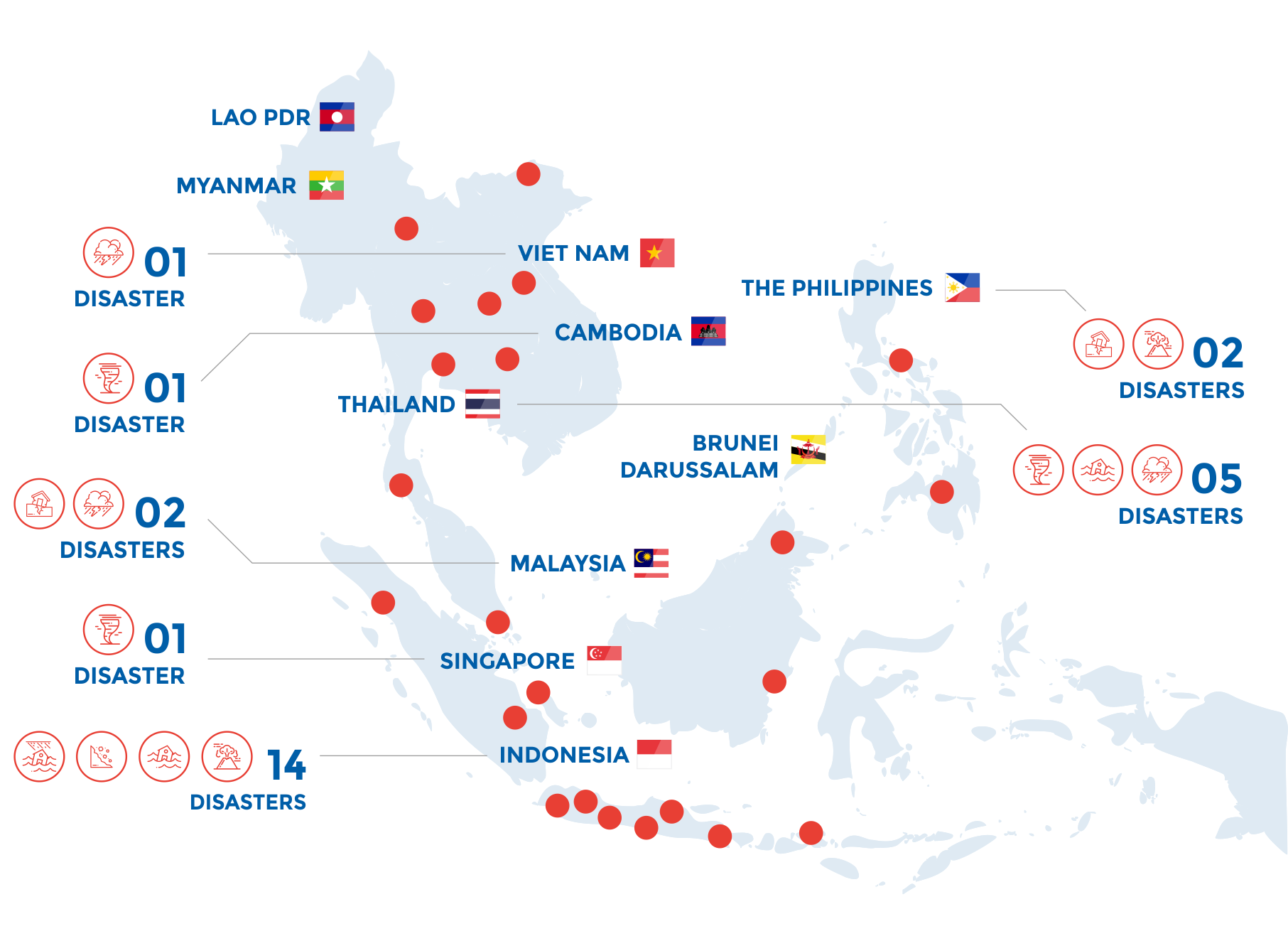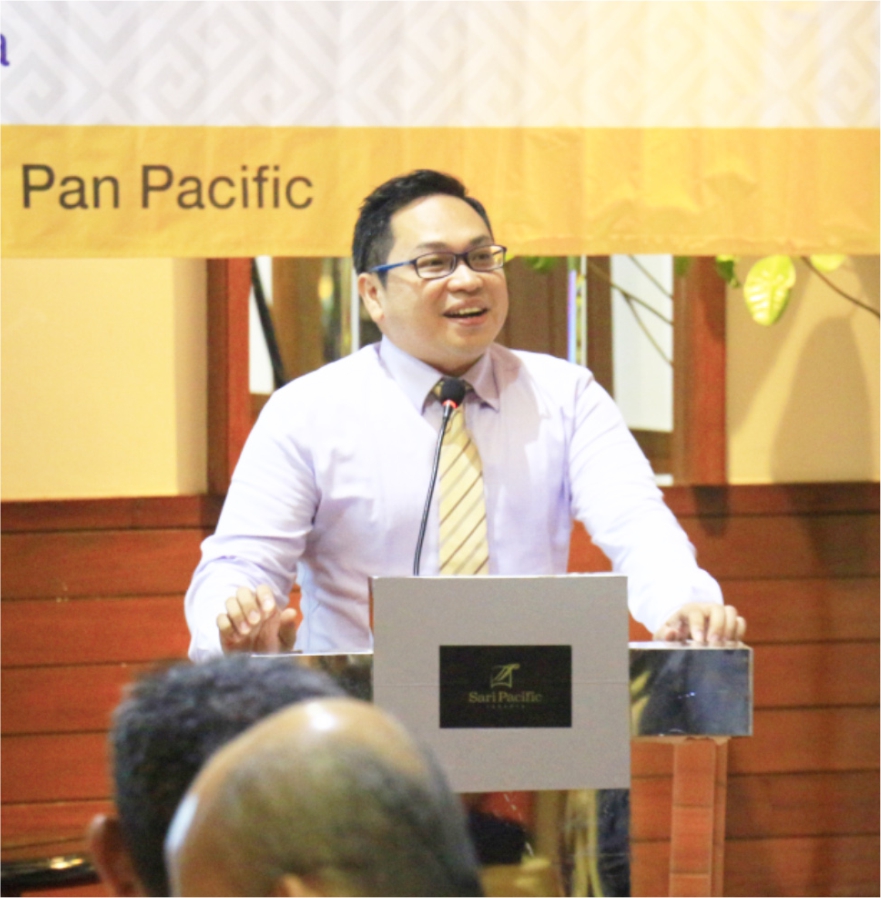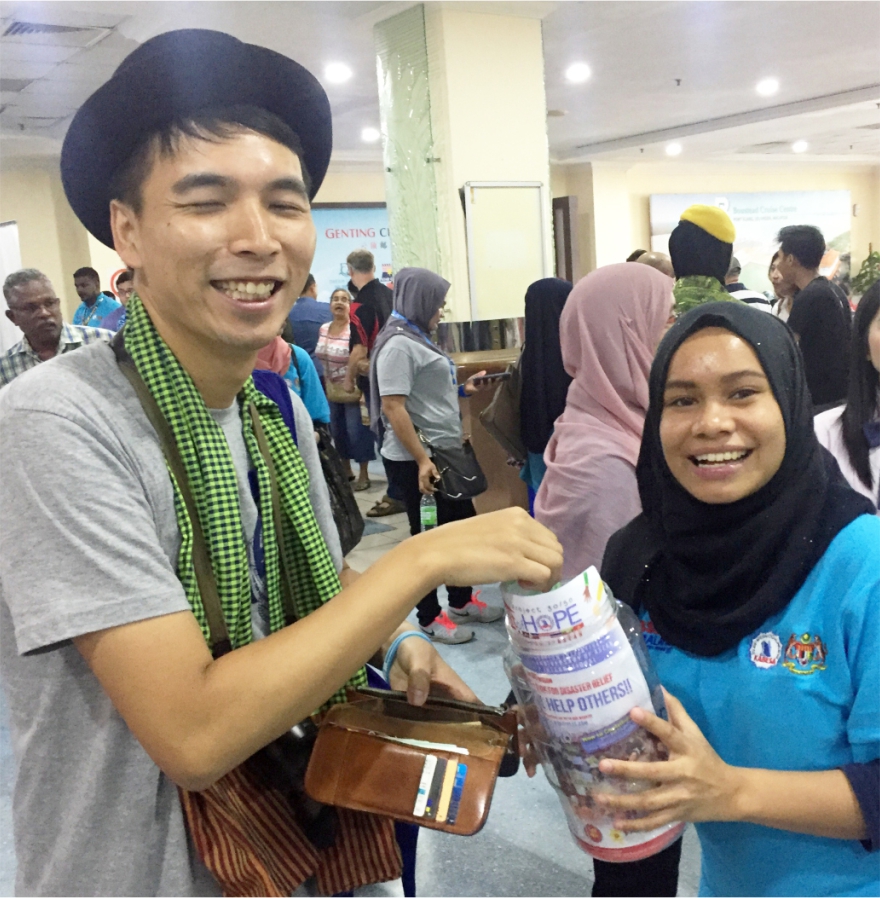
ASEAN WORKSHOP
ON THE IMPLEMENTATION OF ONE ASEAN ONE RESPONSE
Remaining focused on responding to natural disasters in the ASEAN region,
alongside planning for facilitating potential collective ASEAN responses
outside of the region form the key recommendations for the AHA Centre.

ASEAN WORKSHOP
ON THE IMPLEMENTATION OF ONE ASEAN ONE RESPONSE
Remaining focused on responding to natural disasters in the ASEAN region,
alongside planning for facilitating potential collective ASEAN responses
outside of the region form the key recommendations for the AHA Centre.
MONTHLY DISASTER OUTLOOK
MARCH | DISASTER MONITORING & ANALYSIS (DMA) UNIT, AHA CENTRE
Hydro-meteorological disasters, particularly floods, strong winds and storms, continued to dominate disaster occurrence figures in March 2018. During the month, flash-flooding events due to extreme rainfall within a short amount of time, occasionally triggering landslides as a secondary disaster, as evident in several events across Indonesia. Localised strong winds and storms caused damage in Cambodia, Singapore, Thailand and Viet Nam.
In terms of geological hazards, moderate-to-strong earthquakes (≥ M 5.0) were observed in Indonesia, Malaysia and the Philippines, triggering minor local disruptions without having a significant impact on communities.


THAILAND
Thailand is often known as the heart of Southeast Asia, as it lies in the centre of the ASEAN Region, sharing borders with Cambodia, Lao PDR, Malaysia, and Myanmar. The nation is home to a variety of geographical features – including mountains, flatlands, coastal regions, rivers and wetlands – with its proximity to the equator ensuring a hot and steamy climate throughout most of the year, with a climate controlled by tropical monsoons.




